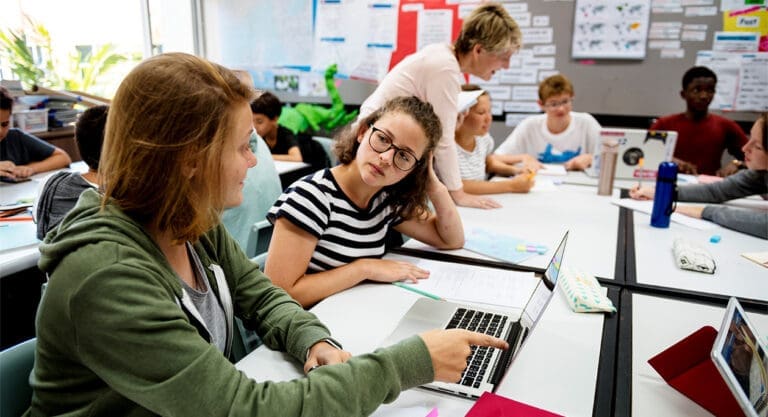We know that learning thrives when students are engaged, invested, and committed. Yet, the school experience for too many students is largely that of a spectator and passive consumer. They watch adults perform, then take what they are given and do what they are told, often with minimal authentic involvement. As a result, they feel no strong connection or sustained commitment to their learning experience or what they are supposed to learn. These students complete assignments and take exams only to forget what was taught and move on to the next set of activities and expectations, and the cycle repeats until the school year is finished. Unfortunately, without a sense of belonging, engagement, and ownership, little meaningful and lasting learning is likely to result.
The challenge is to shift the experience from one of spectator and consumer to one of contributor and collaborator. Fortunately, the solution may be surprisingly simple. In almost any social context, we move from observer and passive participant to member and investor when we assume meaningful roles, have a sense of responsibility, feel needed, and are contributing to something larger than ourselves.
It is human nature to take our engagement seriously when others depend on us. We experience stronger connections when our presence and participation matters. Service to others can be a strong motivator and generate a satisfying sense of accomplishment.
Of course, fully shifting the role students have traditionally played in their learning and school experience suggests a major redesign in how schools typically function. Yet, there are several impactful steps available within the current design that can make an important difference in the experience of learners and move them from observing and consuming to contributing and collaborating. Here are five places to start.
First, give students meaningful responsibilities and opportunities to participate significantly in the operation of the class. We can give them active roles in establishing rules and routines. For younger students, these opportunities might include distribution of materials, leading the class during physical transitions, collecting supplies, and performing other classroom operational activities. Older students may play the role of timekeeper during discussions, process monitor for activities, question recorder for later follow-up, and other roles for activities that we might otherwise manage. At the next level of the shift, students might be given options in the structure and timelines for assignments and project completion. They might even have choices regarding how they will pursue and demonstrate learning and document mastery. The key is to give students, individually and collectively, as many opportunities to play active and meaningful roles in their learning as we can.
Second, give students opportunities to teach what they are learning. Decades of research have documented the mutual benefits of this activity. Most of us can recall our transition from a teacher preparation program to teaching. Suddenly, we took learning more seriously, listened more carefully, and assumed greater ownership for what we learned. We can begin this process by signaling students that when they have learned a given skill, concept, or process, we will be asking them to teach it to someone else. When students are ready, they might “live teach” their new learning to a classmate or record a video of their teaching someone else. This activity can be modified for students who may struggle with key or lower-level skills and need practice by having them teach a skill or concept to a younger student. Not only does teaching someone else represent a more active role for students, the combination of preparation and teaching further consolidates what has been learned and helps to move it into long-term memory.
Third, have students develop questions and quiz other students. While students may initially need instruction and coaching to develop appropriate, valuable questions, the process of creating questions helps students to sort through what is important about a topic or skill and further consolidates their learning. Meanwhile, students move from answering questions that have been presented to them to contributing questions and supporting each other’s learning. Of course, quizzing is a great way for students to prepare for and perform on assessments.
Fourth, create opportunities for students to share advice with other students. Students are often reluctant to take advice from adults, but they can be more open to what friends and classmates have to offer. When confronting a shared challenge such as how best to study, ways to organize and manage time, how to build self-confidence, or even how to solve a classroom problem, we can ask students to share their best advice. Interestingly, not only are students who hear the advice more likely to listen, the students who offer it are more likely to follow the advice they share.
Fifth, position students to tutor and mentor younger learners. Interestingly, when older students who may have difficulties with behavior, struggle with class participation, or even face learning challenges have opportunities to help younger students, many of these challenges go away. The opportunity to help someone and feel responsible for another’s success can be a great experience and confidence builder. Meanwhile, younger learners are often ready to listen and eager to please older students who are giving their time to support them.
We all want students who are invested in their learning. Yet, many traditional instructional practices can discourage students from assuming responsibility and ownership. Fortunately, we have it within our power to help students begin the transition from spectator and consumer to contributor to and collaborator in their learning.



